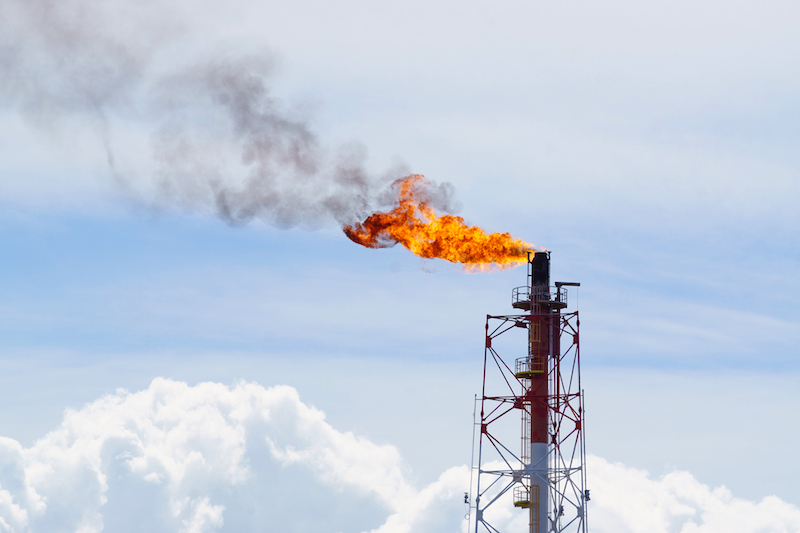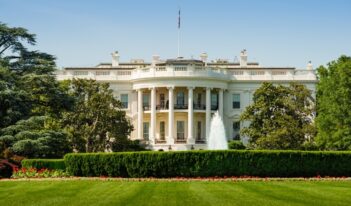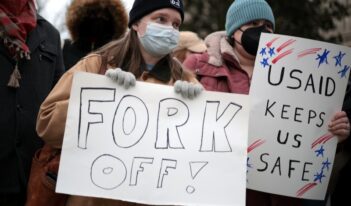
Recent proposal to revoke natural gas regulation is the latest effort to put climate rules in the crosshairs.
U.S. oil and natural gas companies emit significant amounts of methane, “a potent greenhouse gas” that the Obama Administration sought to regulate in 2016. Fewer than two years into his presidency, however, President Donald J. Trump—who applauded the energy industry for surviving the last “eight years of hell”—has overseen a comprehensive about-face by federal environmental regulators.
In September 2018, the U.S. Environmental Protection Agency (EPA) proposed changes to Obama-era methane regulations, seeking to reduce regulatory burdens and harmonize federal and state requirements. EPA’s recently proposed rule would reduce the frequency for monitoring methane leaks and increase the time allowed for their repair. The proposed rule would also allow companies to meet certain state requirements for leaks as an alternative to EPA standards, finding that state regulations such as Texas’s “are at least equivalent” to EPA’s leak requirements. EPA’s proposed rule would additionally streamline the process by which companies request to limit emissions through “alternative means” not contained in federal regulations, such as compliance with state emissions programs or through the private development of new technologies.
Although EPA estimated that the proposal would save the industry $484 million from 2019 to 2025, the agency also acknowledged that the rule “is expected to lead to an increase in emissions”—emissions that the agency predicted will “degrade air quality and adversely affect health and welfare.” Nonetheless, EPA Acting Administrator Andrew Wheeler touted the proposal’s elimination of “unnecessary and duplicative red tape,” which he expects to generate large savings for the industry and “support increased domestic energy production—a top priority of President Trump.”
The American Petroleum Institute (API) likewise applauded the proposal, suggesting that “the proposed changes could ensure that the rule is based on best engineering practices and cost-effective.” API writer Mark Green rejected claims by media outlets that the proposed rule would facilitate releasing methane into the atmosphere and that it represents a broader assault on environmental regulations. Rather, Green argues that because methane is a key ingredient in the production of natural gas, energy companies are already highly motivated to prevent as much of it from escaping as possible—in other words, lost methane translates into lost earnings.
Environmental groups, on the other hand, decried the potential public health and environmental consequences of the proposed rule.
For example, Earthworks claimed that EPA “just sacrificed public health and climate for oil and gas industry profits.” The group also argued that even some industry players likely find the rollbacks unnecessary, noting that Colorado’s oil and gas industry recently supported the state’s more restrictive methane rules, and large producers like ExxonMobil have committed to measures even more extensive than those of the Obama-era rules.
The Environmental Defense Fund (EDF) pointed to recent scientific analyses to challenge the basis for EPA’s decision. One study found that an accurate estimate of methane emissions is about 60 percent higher than the EPA estimate, suggesting a greater impact by natural gas on climate change than EPA’s figure. Another analysis concluded that approximately 50 percent of current methane emissions could be eliminated at zero net cost to the industry. Yet EDF estimated that if President Trump’s rollback efforts succeed, federal regulations would reduce no more than 3 percent of methane emissions by 2025.
Similarly, Natural Resources Defense Council (NRDC) highlighted the dangers of methane both to the climate and to public health. In addition to methane being “the second-biggest driver of climate change after carbon dioxide,” leaks of the gas have been linked to increased asthma attacks and cancer risks in areas surrounding natural gas production.
NRDC also noted the contentious history between the Trump Administration and the Obama-era rule, linking this most recent effort to a prior attempt by EPA to undermine the same methane rules just two months after President Trump took office. That earlier effort ultimately failed when the U.S. Court of Appeals for the D.C. Circuit reinstated the Obama-era rule, holding that EPA’s suspension of it violated the law.
Deregulating American energy producers has long been on President Trump’s agenda. On the campaign trail, he promised to “lift the restrictions on American energy,” arguing that greater energy production is “all upside: more jobs, more revenues, more wealth, higher wages, and lower energy prices.” Later in 2017, after assuming office, President Trump advocated efforts to promote “American energy dominance,” lamenting that “for the past eight years, the federal government imposed massive job-killing barriers to American energy development.”
In March 2017, President Trump issued an executive order requiring EPA to review federal methane rules, and the Administration has been following through on its promise to scale back environmental regulations in general. Indeed, in addition to this latest proposal, EPA is broadly reconsidering “the regulation of greenhouse gases in the oil and natural gas sector.” The agency promised that the fate of such policies “will be addressed in a separate proposal at a later date.”



